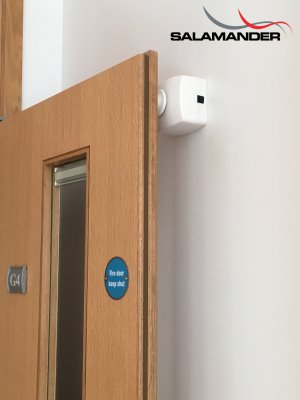What is the Fire Safety Bill 2020 and why is it being amended? Currently progressing its way through Parliament, the Fire Safety Bill 2020 proposes fundamental changes to the Regulatory Reform (Fire Safety) Order 2005. The changes will action the recommendations identified by the Grenfell Tower public inquiry and the Dame Judith Hackett review which found current building and fire safety regulations needed a “major reform” in order to prioritise and protect resident’s safety.
In conjunction with the Building Safety Bill, which overhauls legislation around building construction methods and materials, the Fire Safety Reform represents a landmark change to current fire safety legislation. Lord Greenhalgh, Building Safety and Fire Minister, said: “These are the biggest changes to building safety legislation for nearly 40 years, and they will raise standards across the industry and ensure building owners have nowhere to hide if they break the rules”.
The reform will provide clearer accountability to those responsible for high rise buildings, increase sanctions to deter non-compliance and amplify the voices of residents raising concerns.
Read the Draft Building Safety Bill: www.gov.uk/government/publications/draft-building-safety-bill
What does the Fire Safety Bill 2020 mean for fire door safety?
The bill will impact any managed residential blocks in England, Wales and Northern Ireland where the main use of the building is sleeping, such as; blocks of flats, student accommodation, hotels and hostels.
Buildings will be required to identify an ‘accountable person’ in each premises who will be responsible for the implementation of fire safety measures. These measures are likely to include carrying out risk assessments, ensuring fire-fighting and fire-detection equipment is supplied and establishing fire safety drills and emergency routes. In additional to this, the ‘accountable person’ will also be responsible for carrying out and keeping record of regular inspections of flat entrance fire doors, as well any doors adjacent to common areas or escape routes from multi-occupied residential buildings.
Previously the responsibility of non-communal fire doors was not a legal obligation of building owners or managers, who were able to satisfy legal requirements by asking residents to carry out their own inspection and reporting back any problems. The lack of clarity around responsibility for flat entrance fire doors often resulted in essential maintenance and repairs not being carried out.
Why are fire doors important?
Fire doors are an essential measure in preventing the spread of flames, smoke and toxic fumes should a fire occur. A fire door allows the fire to be compartmentalised, delaying the time it takes to spread from one area to another.
A standard fire door should meet the FD30s standard, which provides up to 30 minutes of protection and should be fitted with a self-closing device. This not only protects the other areas within the building or block, but provides essential time for evacuation.
How can a radio controlled fire door system help?
Building regulations dictate that fire doors must be fitted with a BS EN 1154: 1997 standard self-closing device in order to ensure fire doors ‘swing-shut’ after use. These devices can make heavy fire doors cumbersome, presenting significant obstacles to the young, elderly or disabled. In residential settings, such as student accommodation or care homes where isolation, access or ventilation can be a problem, residents often risk fire door integrity by using wedges to prop open bedroom and flat entrance doors. Wedging open of a fire door prevents it from functioning effectively; risking lives, prosecutions, significant fines and voided insurance policies.
A BS EN1155 standard hold-open, free-swing door closer removes many of the risks associated with standard self-closing devices ensuring that heavy fire doors feel lightweight, easy to move and can be held open at any angle whilst closing in the event of a fire.
The BS 7273-4:2015 code of practice specifically relates to the operation of fire protection measures and the actuation of release mechanisms for doors. There are three actuation types for door devices in different settings; critical, standard and indirect. Critical actuation (Category A) is the highest level of protection available, ensuring that self-closing devices are fail-safe to any potential fault and can actuate within two minutes of power failure.
Category A devices are required when holding open any fire door which forms part of the stair enclosure in a residential building. From November 2020, flat entrance fire doors will also be required to use Category A devices.

Which radio-controlled systems comply with Category A of BS7273-4?
Salamander offers the only wire-free system of radio controlled fire door holders and closers which complies with Category A of BS7273-4.
Each Salamander device connects wirelessly to a mains-powered controller unit, which is connected to the building’s existing fire alarm system. One controller unit can manage up to 99 fire door closers or fire door holders. All products in the Salamander range are battery-powered, wire-free and offer two-way communication between controller and device, allowing the ‘accountable person’ to easily manage and oversee any faults within the building.
The Salamander door closer is suitable for most fire doors, holding them open at any desired position, while the Salamander door holder is designed for doors where standard closers are already in place. The system uses innovative, wire-free, magnetic technology to safely hold open fire doors and release them upon activation of the fire alarm.
Currently, there is nothing to protect leaseholders and building owners from the cost of bringing existing buildings up to standard when the Fire Safety Bill 2020 is passed. As the wireless Salamander system can be retrofitted to existing buildings, it offers the same benefits as a hard-wired system whilst saving time, installation costs and disruption to a building’s fabric or occupants.
To find out more about the Salamander range and find an approved installer near you, visit www.geofire.co.uk/salamander-radio-controlled-fire-door-system/





